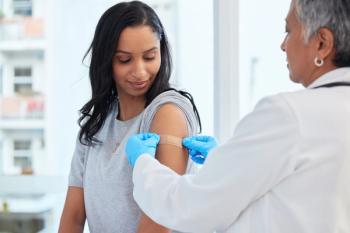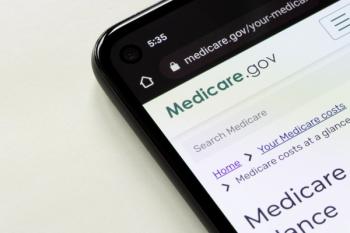
Study Supports Funding for CGM to Improve Pediatric T1D Outcomes in New Zealand
Continuous glucose monitoring (CGM) systems have been shown to improve glycemia for individuals with type 1 diabetes (T1D), but they are not nationally funded in New Zealand.
Advocates are calling for equitable access to
CGM systems, which typically measure interstitial glucose concentration at 5-minute intervals throughout the day, have been shown to improve glycemia for individuals with T1D in several randomized controlled trials (RCTs). The 2 main types are real-time CGM (rtCGM), which automatically transmits data and provides actionable information about current glucose levels, and intermittently scanned CGM (isCGM), which requires manually scanning the sensor to view retroactive data.
In RCTs, rtCGM has shown more significant improvements to time in range (TIR) compared with isCGM, and rtCGM is a crucial component in automated insulin delivery (AID) systems used to manage T1D. Despite the known benefits of CGM for T1D management, it remains unfunded in New Zealand. In other countries, such as Australia, universal funding for CGM has led to marked increases in CGM uptake and improved real-world T1D outcomes post funding. Cost analyses have also found that rtCGM systems are more cost-effective than isCGM and self-monitoring of blood glucose (SMBG).
In New Zealand, neither public funds nor health insurance fund CGM systems, and the high cost of these systems may allow inequities to diabetes technology to persist in the country. The authors noted that disparities already exist in publicly funded insulin pump therapy access.
“Equitable access to advanced diabetes technologies, including CGM, is important because evidence suggests equal access can ameliorate the association between socioeconomic status and glycemia,” the authors wrote. “This is relevant to New Zealand where Māori, Pacific, and socioeconomically deprived children affected by T1D are at greater risk of unhealthy metabolic control.”
The study used data for 1209 eligible children with T1D from the 20 district health boards (DHBs) responsible for providing secondary health care services in their regions. More than 99% of pediatric patients with T1D are estimated to be managed by secondary care diabetes services in New Zealand. The DHBs provided data in Excel sheets, as there is no national diabetes treatment or outcomes database.
Sixty-three percent of children with T1D were aged 10 to 15 years of age. In the cohort, 70.2% of children identified as European/Other ethnicity; 18.1%, Māori; 7.1%, Pacific; and 4.6%, Asian. The most common mode of insulin delivery was injection (57.7%), followed by insulin pump (40%). Very few used AID devices (2.3%), which were not yet commercially available and were mostly used in research at the time.
A total of 67.5% of the study population used CGMs, with the majority (59.7%) using isCGM rather than rtCGM. After adjustments for age, gender, ethnicity, New Zealand Deprivation (NZDep) quintile, duration of diabetes, DHB, and insulin modality, patients identifying as European/Other were 20% more likely to be using CGM compared with Māori children. In addition, compared with Māori children, Pacific children were 38% less likely to be using CGM.
Increased deprivation based on NZDep quintile was associated with lower CGM use, as was older age. The impact of CGM on glycated hemoglobin (HbA1C) levels varied by ethnicity. Māori children showed the most significant difference in HbA1C when using rtCGM vs SMBG, while other ethnicities saw a less pronounced differences.
“Equitable access to diabetes technologies is essential to health equity, especially given that certain demographic groups already experience a higher burden of diabetes and its complications,” the authors wrote. “This national data set identifies compelling health inequities based on ethnicity for children with T1D in New Zealand.”
The findings emphasize disparities in CGM use based on ethnicity and socioeconomic status in New Zealand. CGM was also independently associated with lower HbA1C, indicating that a lack of funding for CGM may contribute to the health disparities seen in children with T1D.
“This study confirms the presence of inequities in access to CGM for children younger than 15 years affected by T1D in New Zealand, a health system that does not directly fund or subsidize this technology,” the authors concluded. “Furthermore, the study builds on existing evidence that CGM is associated with healthier glycemic control. These results add to the evidence that universal access to CGM for children affected by T1D is one way to address health outcome inequity in T1D for children in New Zealand.”
Reference
Burnside JM, Williman JA, Davies HM, et al. Inequity in access to continuous glucose monitoring and health outcomes in paediatric diabetes, a case for national continuous glucose monitoring funding: A cross-sectional population study of children with type 1 diabetes in New Zealand. Lancet Reg Health West Pac. Published online November 17, 2022. doi:10.1016/j.lanwpc.2022.100644
Newsletter
Stay ahead of policy, cost, and value—subscribe to AJMC for expert insights at the intersection of clinical care and health economics.

















































